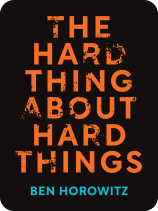

This article is an excerpt from the Shortform book guide to "The Hard Thing About Hard Things" by Ben Horowitz. Shortform has the world's best summaries and analyses of books you should be reading.
Like this article? Sign up for a free trial here .
What are the best methods for providing feedback to your employees? How can you deliver feedback tactfully?
As a business owner or manager, you should always be evaluating your employees. Providing feedback has many benefits including improved performance, showing your employees you care, and creating an open communication model.
Keep reading for advice on how to provide feedback.
Providing Feedback
As a manager, you should constantly be evaluating people and giving feedback. As a CEO, you should have an opinion on everything in your company.
Constantly giving feedback has a few benefits:
- It gives people ways to improve. In turn, this makes them more productive and makes them feel you care about their development.
- It makes personnel decisions easier, such as writing performance reviews and deciding compensation and promotions.
- It makes it OK across the team to give feedback. If you model the behavior, your team will be comfortable sharing bad news and telling each other how to improve.
You should develop a personal style around giving feedback based on your own personality. However, here are general pointers that apply to everyone:
- Come from an earnest desire to improve the person. When someone trusts your intentions, she will be much more receptive to what you have to say.
- Be honest. Believe in what you say. People detect inauthenticity, and that kills trust.
- Customize the feedback to the person. Some people are delicate; others are thick-skinned. Some people get the point right away; others need a message drilled in. Delivering the message the wrong way for the person will be counterproductive.
- Be clear, not vague. Vague feedback is useless (“it’s good, just needs one more pass”). Point out precisely what needs work (“your conclusion is confusing because it doesn’t logically follow from the earlier slides.”)
- Avoid the “shit sandwich.” This is a rookie manager tactic where you start with a compliment, give the feedback, then end with a compliment. Over time, your compliments will start sounding inauthentic, and you will sound rehearsed.
- Don’t be mean. Don’t use feedback to bully someone or assert your dominance. If you come from an earnest desire to improve the person, this shouldn’t be an issue.
- Don’t embarrass someone in front of the team. Some feedback can be delivered in a team setting, but embarrassing someone will cause her to resent you.
- Open up discussion. Be open to the idea that you might be wrong. Encourage the person to share her opinion and argue where you’ve misjudged. Resolve the discussion so that you both understand the quality bar better.
Feedback in One-on-One Meetings
One-on-one meetings are private meetings between a manager and her direct report. Compared to email or group meetings, they’re relatively informal and intimate, and thus provide a good avenue for communication.
Some people think one-on-one meetings are pointless, but they’ve usually been victims of bad ones. In reality, one-on-ones are fantastic opportunities to learn about problems, both in the company and with the employee. They’re also a place to bounce new, unformed ideas around before they’re ready for formal presentation.
Here’s how to run a one-on-one:
- Adopt the mindset that the one-on-one is a meeting for the employee, not for the manager. As a manager, you should talk only 10% of the time and listen 90% of the time.
- Ask your direct report to set the agenda and send it to you in advance.
- During the meeting, try to read between the lines and draw out the important issues. The more soft-spoken the person is, the more important this will be.
Here are questions to ask in one-on-ones:
- What’s our number one problem? Why?
- If you were me, what would you do differently?
- What’s the biggest opportunity that we’re not chasing?
- Are you happy working here?

———End of Preview———
Like what you just read? Read the rest of the world's best book summary and analysis of Ben Horowitz's "The Hard Thing About Hard Things" at Shortform .
Here's what you'll find in our full The Hard Thing About Hard Things summary :
- What it was like to head a company through the dotcom bubble and subsequent burst
- Why failing is normal
- How to build a good place to work






